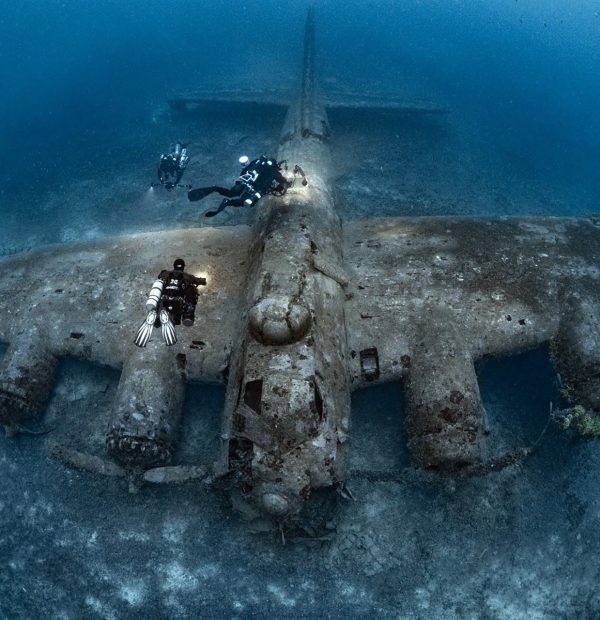Friday, 10 May 2024
Menu

Mexico turned out to be the destination of the expedition, which had its beginning in Cuba. After reaching the destination, the Spanish conquistador put everything on one card and by cutting off the possibility of return, he made it clear to his subordinates that from now on they could only push forward.
The sinking of the ships, and the impossibility of return, was a remarkable act of commitment and marked the beginning of the conquest of Mexico and a new direction in the geopolitics of the world at that time. Interestingly, the wrecks of Hernán Cortés’ sunken vessels have never been found.
After 500 years, this state of affairs may finally be changing, or at least hard work is underway to make it happen. The latest discovery by an international team of researchers, in the form of two iron anchors, is another step closer to the archaeologists’ ultimate success.
In the summer of 2018, researchers affiliated with The Lost Ships of Cortés Project, which involves the combined forces of Mexico’s National Institute of Anthropology and History (INAH), the University of Miami and the non-profit organisation Submerged Archaeological Conservancy International (SACI), spent six weeks combing a 30-kilometre area of seabed near the first Spanish city in North America founded by Cortés – Villa Rica de la Vera Cruz.
Using the latest science and technology, local knowledge and resources provided by INAH, the team located an anchor buried in the seabed at a depth of approximately 10m. Dating techniques, identification of wood species and morphological analysis allowed the age and style of the anchor to be determined. The results confirmed that anchors of this type were used on the Spanish ships of Hernán Cortés.
In July 2019, the team returned to explore the area further and found two more anchors whose design is consistent with the one found in 2018. Even more intriguingly, these anchors were found buried in the bottom, lying along a north-south axis. However, this seemingly insignificant detail supports the hypothesis that the ships were anchored at sea and systematically sunk.
The discovery of three 16th century anchors provides the team with valuable archaeological data. The anchor discovered in 2018 is just over 2 metres long and is buried at an angle, with a ring laid out as if a ship is still moored at its end. The two anchors discovered in 2019, however, are larger. The largest was found about 300 metres north of the anchor discovered in 2018 and is 3.68 metres long. The third anchor, found just 100 metres north of the largest anchor, is the second largest and measures 2.60 metres long.
For the time being, the anchors will remain under water. For the time being, there are no means of extracting them and securing them properly, so that after five centuries spent on the seabed, when brought to the surface they will not suffer irreparable damage. The archaeologists have carefully examined the sites and compiled detailed documentation that will be used for further research. As soon as the team obtains the necessary funding, they intend to excavate and begin the process of conserving at least one of the anchors found.
Source: inah.gob.mx










Welcome to DIVERS24.COM, your daily source of scuba news, freediving, scuba diving information, and equipment reviews. Our comprehensive coverage of the dive industry from A to Z provides you with all the latest scuba news, training updates, underwater photography tips, and everything else related to scuba diving. Whether you’re a beginner or an experienced diver looking for more knowledge about scuba gear or techniques – we’ve got it covered! With our in-depth articles written by experienced divers who have been there and done that, you are sure to find exactly what you need here at Divers24.com. Dive into scuba news today!
Underwater Media Sp. z o.o.
Szafarnia 11/F8,
80-755 Gdansk, Poland
Welcome to DIVERS24.COM, your daily source of scuba news, freediving, and scuba diving information. Sign in for a weekly news update and discount coupons for dive gear and apparel.
@2023 - underwatermedia.pl. All Right Reserved. Designed and Developed by Tworzenie stron internetowych Gdansk

The Divers24 portal is currently the largest online medium treating diving in Poland. Since 2010 we have been providing interesting and important information from Poland and around the world on all forms of diving and related activities.
Contact us: info@divers24.com